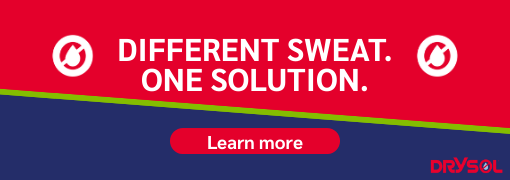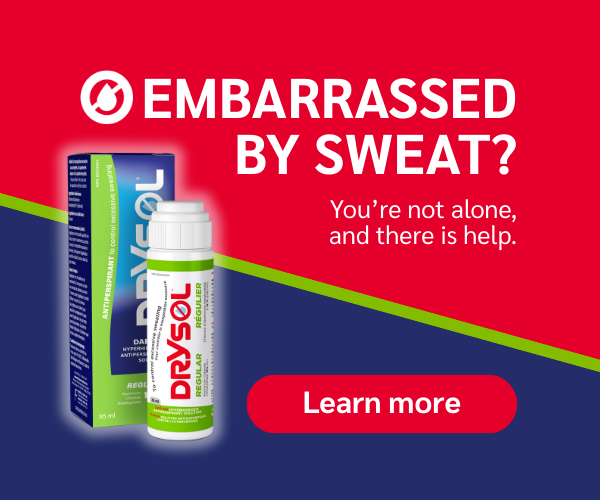Can certain foods cause or cure MS? Learn the truth behind some common MS diet myths.
Myth: Eating foods high in animal fats causes MS. This idea came about when researchers found a higher risk of MS in countries where people consumed more animal fat. Further studies were done to test whether this link meant the animal fats were causing MS, or whether the link was a just a coincidence. These studies did not show that eating high levels of animal fats caused MS.
Fact: Not eating a healthy diet can make some of your symptoms worse. If you don't get enough nutrients and calories in your diet, your symptoms of fatigue and weakness may get worse. If you aren't getting enough fluids (at least 8 glasses per day), you may become dehydrated, which can cause fatigue, constipation, and headaches.
Myth: Antioxidants can cure MS. Some studies have found lower levels of antioxidants in people with MS, while others have not. So it is not clear whether MS is related to antioxidant levels or whether taking antioxidants will help MS. There have been no scientific studies showing that antioxidants can cure MS.
Fact: Omega-3 and omega-6 fatty acids may help people with relapsing/remitting MS. Some studies suggest that omega-3 fatty acids (especially linoleic acid) may slightly reduce the severity and frequency of relapses in people with MS. Omega-6 fatty acid intake should be balanced with omega-3 fatty acids, which can be found in oily fish (e.g., salmon, mackerel), green leafy vegetables, and linseed oil. Omega-6 fatty acids are found in nuts and seeds. Both omega-6 and omega-3 fatty acids are also available in supplements. However, the long-term effects of taking omega-6 and omega-3 supplements are not known. Check with your doctor before starting supplements or making major changes to your diet.
Heard about a particular diet for MS, and want to try it? Check with your doctor before making any major changes to your eating habits.
All material copyright MediResource Inc. 1996 – 2026. Terms and conditions of use. The contents herein are for informational purposes only. Always seek the advice of your physician or other qualified health provider with any questions you may have regarding a medical condition. Source: www.medbroadcast.com/healthfeature/gethealthfeature/MS-and-Nutrition
Many people with MS suffer from fatigue. Did you know that what you eat and when you eat it can affect your energy levels? Here's how to adjust your eating habits to help you deal with fatigue.
What to eat:
If you don't get enough nutrients and calories, you'll feel tired and weak. Ensure that your diet contains a variety of fruits and vegetables, whole grain products and foods that are sources of protein. Try to choose lower-fat sources of protein such as lean meats and fish.
And don't forget the water! Dehydration can sap your energy and cause other symptoms such as constipation and headaches. So to keep up your strength, be sure you're well-hydrated – drink at least 8 glasses of water per day.
Avoid using excess caffeine to keep you alert. Too much caffeine during the day will keep you from getting a good night's sleep. This can be the start of a vicious cycle. Avoid sugary snacks and desserts, which will make you feel tired and drained.
When to eat it:
If you want to eat for energy, when you eat is as important as what you eat:
- Don't skip breakfast. This can leave you feeling tired all morning.
- Eat smaller, more frequent meals. Aim for 5 or 6 meals per day instead of the traditional 3. Smaller, frequent meals will give your body frequent energy boosts. Larger meals can make you feel more tired.
- Make sure you eat something at least every 4 hours.
- Avoid the mid-afternoon energy crash by having a mid-afternoon snack with protein (such as nuts or cheese).
By getting enough nutrients and calories, and spreading your meals throughout the day, you'll have more energy and enjoy better general health.
All material copyright MediResource Inc. 1996 – 2026. Terms and conditions of use. The contents herein are for informational purposes only. Always seek the advice of your physician or other qualified health provider with any questions you may have regarding a medical condition. Source: www.medbroadcast.com/healthfeature/gethealthfeature/MS-and-Nutrition
You've probably heard that eating right can help people with MS keep up their energy and improve their overall health. But it's not easy to make this change overnight! And if you experience fatigue, poor coordination, and mobility problems from your MS, it can be even harder. But there are easy ways to eat healthy with MS.
Many people find it hard to stick to a healthy diet for one simple reason – it's not convenient. The key to eating healthy is to make it easy by having all the basics on hand to make a healthy meal or snack. Here are a few tips:
Meal planning and shopping
- Invest in one or two good cookbooks that specialize in healthy meals that are quick and simple to make. Check with your local MS society for recommendations.
- Learn how to make a few of these healthy meals and snacks. Then keep your kitchen well stocked with the basic ingredients needed to make them.
- Save yourself time and energy by grocery shopping only once a week. Before you go, think of which meals and snacks you want to make that week. Then make a list, including the ingredients you'll need for these foods plus any "basics" you need to restock.
- If you're feeling low on energy when grocery shopping day comes around, or if carrying groceries is a problem, consider using a delivery service, either online or through your grocery store. Or give your list to a friend or family member so they can pick up your groceries while they're shopping for their own.
Cooking
- To make cooking easier, choose ingredients and recipes with minimal preparation time. You can also make it faster by choosing ingredients that are already partly prepared, such as pre-chopped vegetables or pre-shredded cheese.
- If your symptoms make it difficult or tiring to cook, consider having an occupational therapist look at your kitchen. This professional can suggest ways to make your kitchen work better for you, such as rearranging your kitchen, using special utensils or reaching aids, or removing cupboards and shelves under your kitchen counters so you can sit while preparing a meal.
- Cook enough for many meals, and freeze the leftovers. This way you won't have to cook as often, which will save you time and energy. To reduce fatigue, cook on days when you don't have many activities already scheduled. On busier days, you can eat leftovers.
And what about those days when you're out of leftovers and don't have the time or energy to cook? Keep on hand some healthier frozen dinners (those that are low in salt and fat) and take-out menus from restaurants with healthy food options. These are a great alternative when cooking is not an option.
All material copyright MediResource Inc. 1996 – 2026. Terms and conditions of use. The contents herein are for informational purposes only. Always seek the advice of your physician or other qualified health provider with any questions you may have regarding a medical condition. Source: www.medbroadcast.com/healthfeature/gethealthfeature/MS-and-Nutrition
Food labels, also known as Nutrition Facts labels, can help you tell healthy foods from nutritional disasters. Most pre-packaged foods in Canada must come with a Nutrition Facts label. These labels tell you how many nutrients and calories are found in each serving of the food. The labels list:
- Calories
- Fat (including the unhealthy saturated and trans fats)
- Cholesterol
- Sodium
- Carbohydrates (including sugar and fibre)
- Protein
- Vitamin A
- Vitamin C
- Calcium
- Iron
The label lists both the amount per serving and the percentage of a recommended daily value (% DV). Looking at the % DV gives you an idea of how much of a particular nutrient the food contains relative to the total amount you should be getting in a day.
But there's more to the story. You've also got to look at the serving sizes and understand what the nutrition claims really mean.
Be careful with serving sizes!
- When comparing the nutrition labels for foods, make sure you are comparing the same serving size. If not, you could reach false conclusions. For example, it might look like one food is lower in fat than the other, but only because the serving size is smaller.
- Remember that the serving size on the label is not necessarily the same as the serving size you end up eating! Compare the serving size to what you would realistically expect to eat. Often the serving size on the label is much smaller. For example, a serving size for chips or crackers is often just a handful.
- Some labels provide information on the food "as prepared." This is common for mixes or cereals, where other ingredients (such as milk) are added before you eat them. This means that the label includes not only the nutrition information for the food, but also for the other ingredients you add (based on average amounts).
Know your nutrition claims. Reaching for a "low fat" salad dressing and wondering how low fat it really is? Some of the nutrition claims made on food labels have very specific meanings, which can help you decide which foods are healthier:
- "Low fat" means 3 g or less of fat per serving
- "Reduced" means at least 25% (one-quarter) less than the regular product
- "Reduced in fat" means at least 25% less fat than in the regular product
- "Reduced in calories" means at least 25% fewer calories than in the regular product
- "Sodium free" means less than 5 mg of sodium per serving
- "Source of fibre" means at least 2 g of fibre per serving
- "Lightly salted" means 50% less salt compared with a similar product
- "Light" means the food meets the requirements for either "reduced in fat" or "reduced in calories." Otherwise, the manufacturer must explain what makes the food "light," such as "light in colour."
By reading the Nutrition Facts label, and keeping a close eye on the serving size, nutrition claims and % DV, you're well on your way to making healthier food choices. And healthy eating can help you live well with MS!
All material copyright MediResource Inc. 1996 – 2026. Terms and conditions of use. The contents herein are for informational purposes only. Always seek the advice of your physician or other qualified health provider with any questions you may have regarding a medical condition. Source: www.medbroadcast.com/healthfeature/gethealthfeature/MS-and-Nutrition

